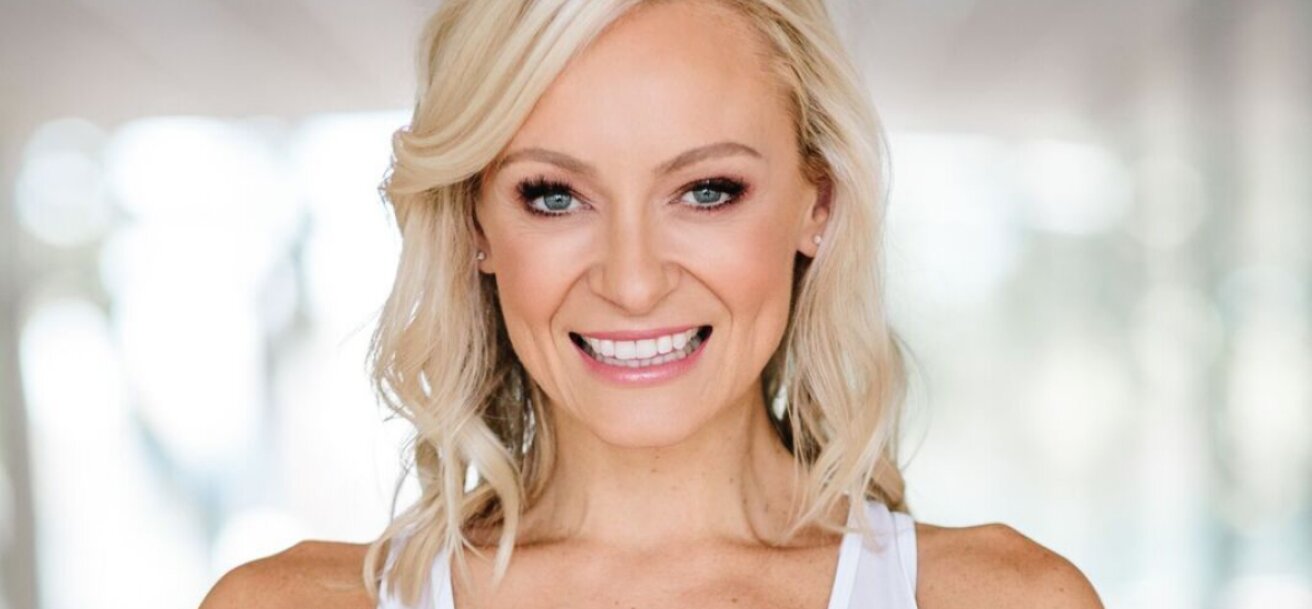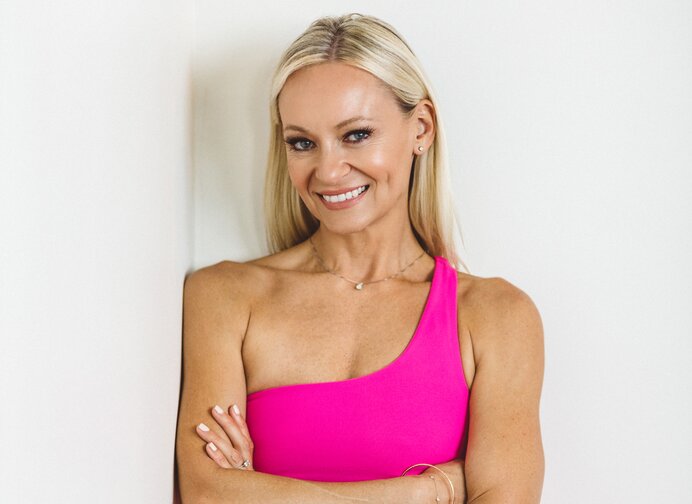
WELLBEING
How to Exercise In Midlife and (Peri)Menopause, According to a Celebrity Trainer
Fitness expert Simone De La Rue shares her top tips for staying happy, healthy and strong through perimenopause and menopause.
As the 25 million women who are currently in menopause know, perimenopause and menopause can bring significant changes to the skin. But skincare isn’t the only thing that needs to shift. In addition to hyperpigmentation, rosacea, dryness, and more, women in (peri)menopause often see their bodies undergo changes. Due to a drop in estrogen, it’s common to experience weight gain, an increase in fat—particularly around the middle—and a decrease in muscle strength and bone density.
To help women prepare for these bodily changes, which typically occur between the ages of 45 and 55, we tapped renowned fitness expert Simone De La Rue. The founder of Body by Simone recently launched The Strength in (Peri-)Menopause Program for all women experiencing the aforementioned symptoms—and for herself.
“I was struggling with all the symptoms of midlife,” De La Rue explains, listing lack of motivation and lethargy as telltale signs. “I kept thinking if I feel like this, and I actually get paid to work out, how must all the other women feel out there?” As such, the fitness buff is determined to give other women access to the same tools she used to reclaim her energy and stay well and grounded through hormonal shifts.
Read on for De La Rue’s top tips for fitness, nutrition, and mental health for women in peri/menopause.
What are common myths about how women should work out?
As women, we were always told that we should do lots of cardio to control our weight and that we shouldn't lift weights because we’d bulk up. That's an okay philosophy—at least it was for me in my 20s and 30s, even possibly my early 40s. But as soon as women hit midlife, especially as they’re starting to go into perimenopause and menopause, they need to shift from cardio-heavy workouts to strength-training workouts.
My biggest training tip for women in menopause is: Shift your focus to short, effective, strength training. This helps build and maintain muscle mass, while also supporting the exhaustion from hot sweats and sleepless nights. When I tell women to start lifting weights, most of them still say to me: I don’t want to bulk up! In truth, it’s extremely difficult to build muscle as we age, because each year we lose muscle mass. It would take a lot of work to look like The Incredible Hulk.
My biggest training tip for women in menopause is: Shift your focus to short, effective, strength training.

Why is strength training so important for women as we age?
Firstly, it helps with our bone density. As we age, especially going into perimenopause and menopause, our bones become a lot more brittle, and we lose a lot of our bone density. Resistance training helps us maintain our bone density.
The same goes for our muscle mass. To maintain the muscle mass that we have—not just build it but maintain it—we have to work the muscle. That means doing strength training. That doesn't mean you're going into a gym and deadlifting 300 pounds. Heavy weights for women could be eight pounds, 10 pounds or 15 pounds.
Strength training also helps with heart health, and it’s a great tool for weight loss and balancing your hormone levels. With weight training, you don’t get the spike of cortisol that comes with doing high-intensity cardio.
Strength training helps with heart health, and it’s a great tool for weight loss and balancing your hormone levels.
Do you have any thoughts on how cortisol can affect skin health?
Though I don’t specialize in skin health, I can say that spiked cortisol levels can cause extreme stress and anxiety. If you’re anxious, you’re likely not getting enough sleep, and that's going to affect your skin. Plus, when you’re not sleeping well you’re more prone to skipping workouts because you’re so fatigued.
What is an ideal workout regime for women in perimenopause and menopause?
You need to focus on one muscle group at a time and work that muscle to fatigue. A great way for women to wrap their heads around this is to designate certain days for certain muscle groups: Monday is upper body, Wednesday is lower body, and Friday is full body. Those days in between could be rested recovery or active recovery. Active recovery could be going for a walk, doing dance cardio or going for a cycle or a swim.
How heavy should the weights be on strength-training days?
Try progressions. Start by lifting heavier weights with fewer repetitions, and slowly build up your strength over time. It's okay if you start off with five pounds or eight pounds, —maybe it takes you three months to build up to lifting 10 pounds. You can get an incredible workout in 30 minutes if you focus on a particular muscle group and work it to fatigue.
Get at least 100 grams of protein a day. This is beneficial for your weight, for your skin and your overall well-being.
What nutrition advice can you offer women in perimenopause?
Women in midlife need to up their protein intake. Especially if they're increasing their strength training, they need to make sure that they’re fueling the muscles. Ideally, you get at least 100 grams of protein a day. This is beneficial for your weight, for your skin and your overall well-being. Also include foods high in calcium and vitamin D to support your bone health. Some of my favorites include salmon, canned tuna, Greek yogurt, cottage cheese, cooked kale and oranges.
What are your wellness tips for women going through peri/menopause?
Many women experience stress, fatigue, irritability, depression and anxiety. Firstly, please know you are not alone! Practicing relaxation techniques such as meditation and breathwork have been proven to be helpful when dealing with mood instability.
When you meditate, you don’t have to sit with your legs crossed. You can do a walking meditation or journaling—whatever it takes to still your thoughts. Just keep it simple, because life is overwhelming enough.
Additional Reading
Your Shopping Bag
Your shopping bag is empty











